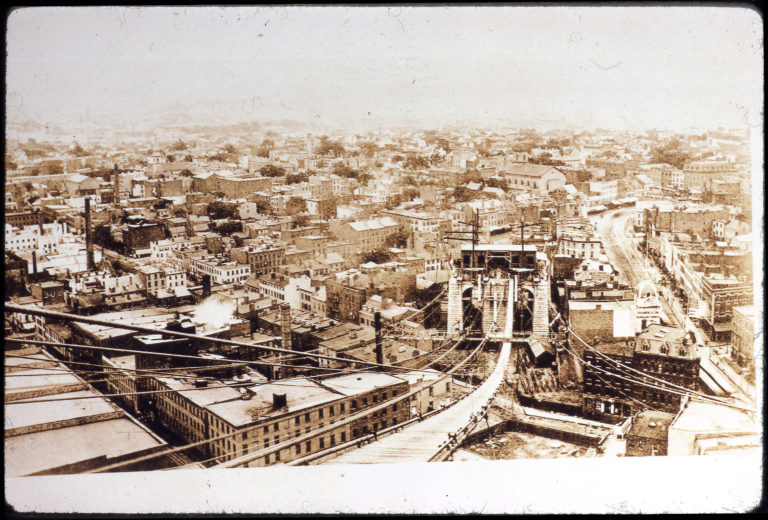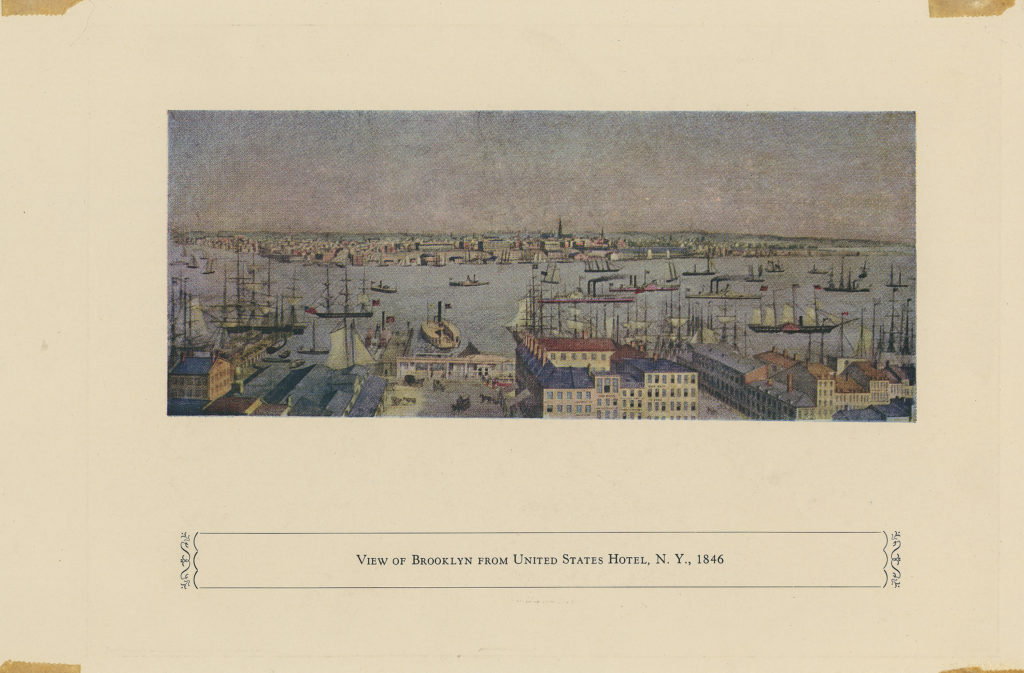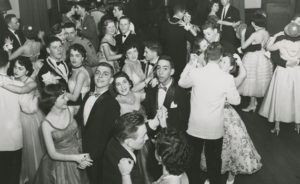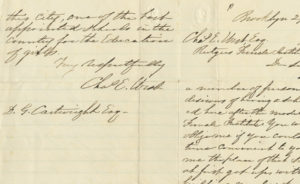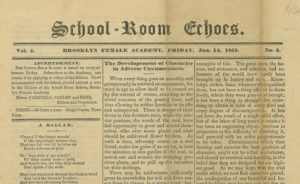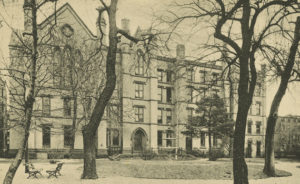A Growing Brooklyn
When the Brooklyn Female Academy opened its doors in 1846, Brooklyn Heights was a very different community than what exists today.
In 1845, Brooklyn was a rapidly growing city with an increasingly diverse population. Between 1840 and 1845, Brooklyn’s population doubled, from forty thousand to eighty thousand. Many of the new residents had arrived from Ireland and Germany in the country’s first great wave of immigration. What had once been a village was rapidly becoming one of America’s largest cities.
Many of these newly arrived Brooklynites worked in warehouses along the waterfront and lived in crowded tenement neighborhoods nearby.
By contrast, Brooklyn Heights was a quiet refuge for many of the city’s wealthiest businessmen. Many of these men commuted to work daily by ferry across the river to Manhattan. While the commute could be crowded and hectic, Brooklyn Heights offered the opportunity to raise a family in a neighborhood characterized by large homes, green parks, and lawns. In 1883, the Brooklyn Bridge opened, easing the congestion of the daily commute.
In 1898, Brooklyn was annexed and became part of the Greater City of New York.
